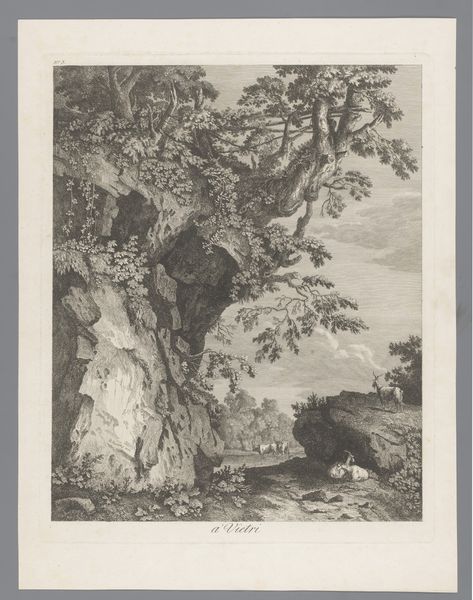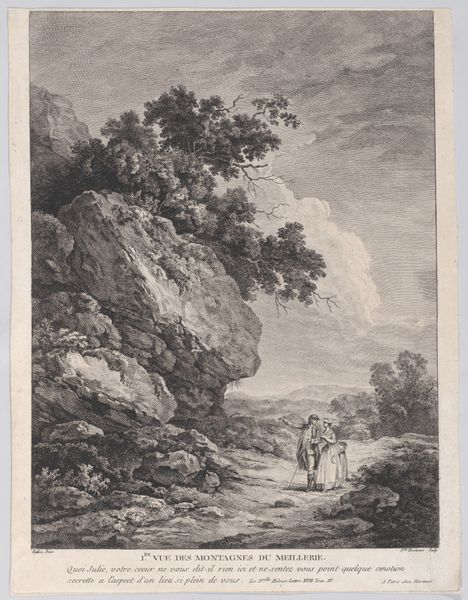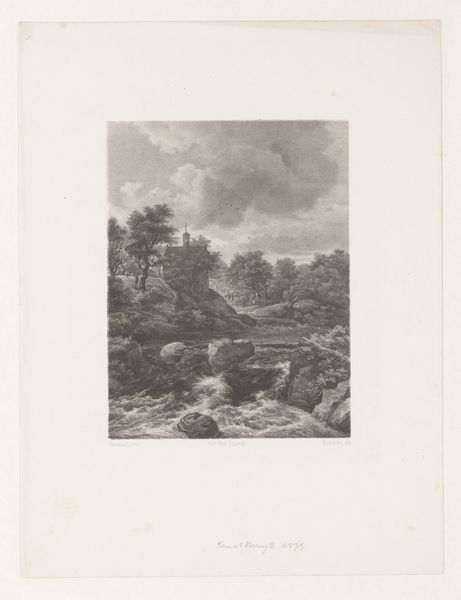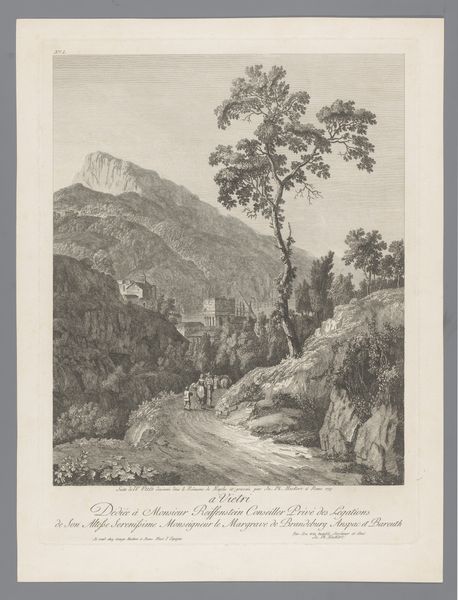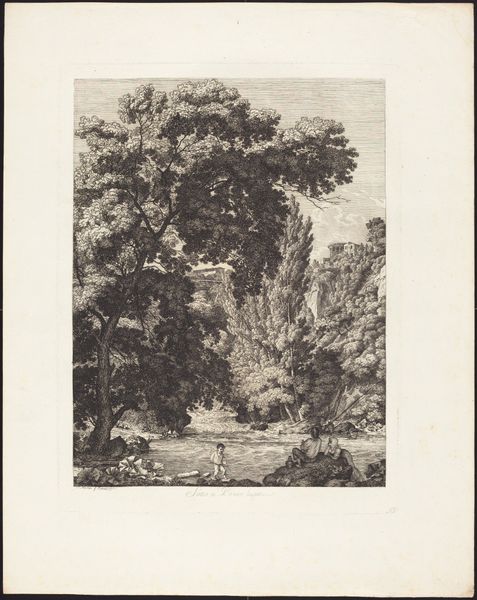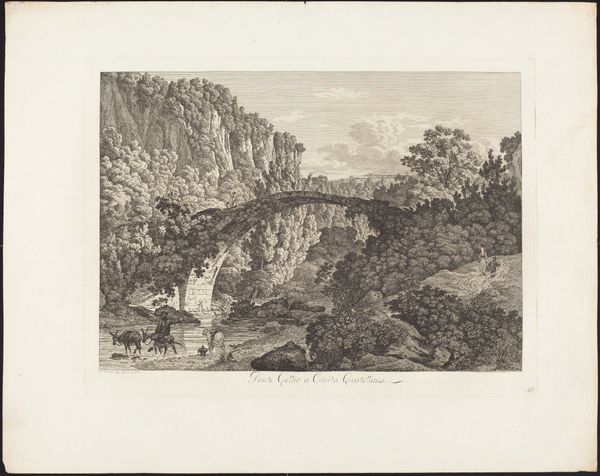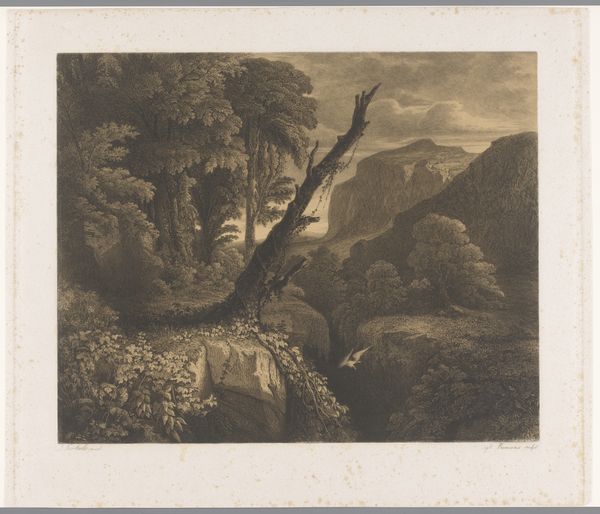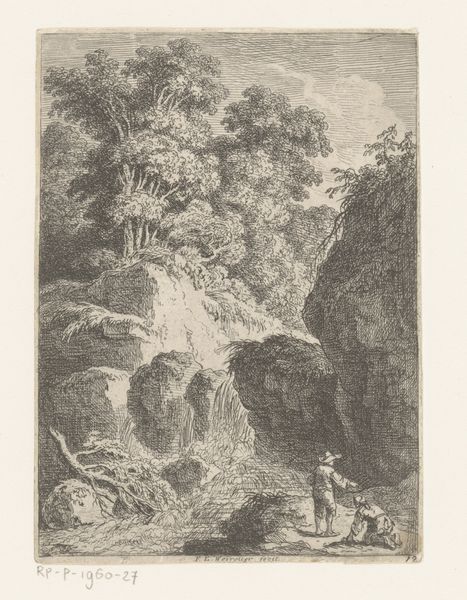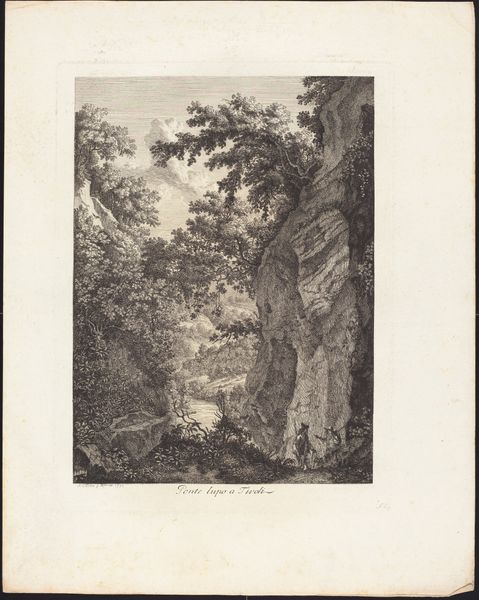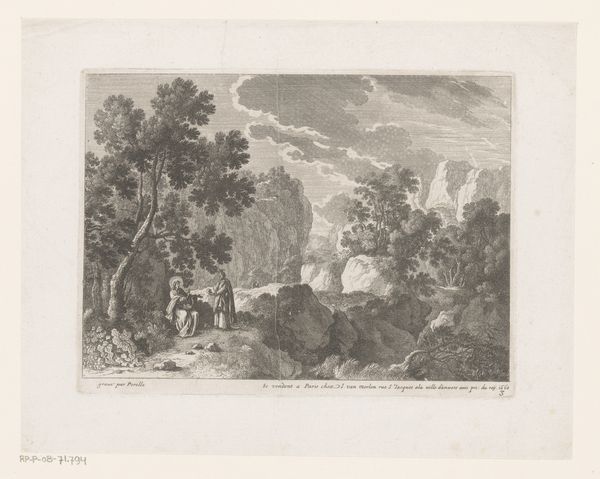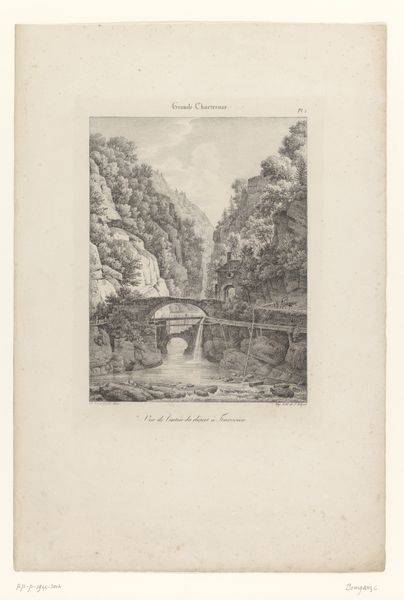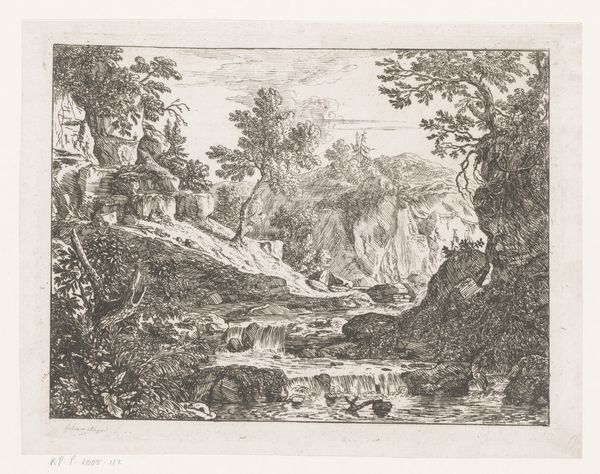
etching, engraving
#
neoclacissism
#
etching
#
landscape
#
engraving
Dimensions: height 459 mm, width 368 mm
Copyright: Rijks Museum: Open Domain
Curator: Looking at Jacob Philipp Hackert’s “View of Sorrento near Naples” from between 1777 and 1779, held here at the Rijksmuseum, it really brings together neoclassical ideals of landscape. I am interested in its production and process. Editor: My first thought is pure escapism! That light, the implied cool breeze. It feels like a tiny, perfect stage setting. It just invites you to invent a whole story around it. Curator: Yes, but note how Hackert is really mediating nature here. This isn't a wild, untamed landscape, even if it appears rustic at first glance. Look at the careful engraving and etching techniques – the clear, controlled lines and graded tones. It really echoes that Enlightenment desire to bring order to the natural world. It's about production. Editor: Absolutely, there's an undeniable artifice. The figures are posed so deliberately, as if they're conscious of being observed or captured, but it does make it almost a place I want to walk into - like a film set before they yell 'Action!'. You just need to feel this peaceful life that this image shows so nicely. Curator: Which I think is key when we think about the intended consumer. This wasn’t art for the masses. Etchings and engravings like these played a crucial role in disseminating idealized views and lifestyles. This speaks to class and ownership, not pure aesthetic bliss. Editor: True! I guess I'm responding to how vividly he communicates texture—the roughness of the bridge, the dense foliage. This really puts me in touch with these feelings about being present, here. Curator: Precisely! And remember the social context of printmaking – it's an artisanal product. How it speaks of both labor and leisure. Editor: You're right. I get so wrapped up in the imagined scene that I overlook how deliberately crafted it is. It’s the magic of a deceptive medium that tricks my imagination, so this does show how that’s very important to notice too, of course. Curator: Precisely – the mechanics of creating a window onto an idea of Sorrento. Thinking about its neoclassical foundations, it really grounds its materiality. Editor: Thank you for pulling me back, I was so into Sorrento! You’ve revealed another layer, I like it, showing that context is all for getting a better, more full understanding.
Comments
No comments
Be the first to comment and join the conversation on the ultimate creative platform.


